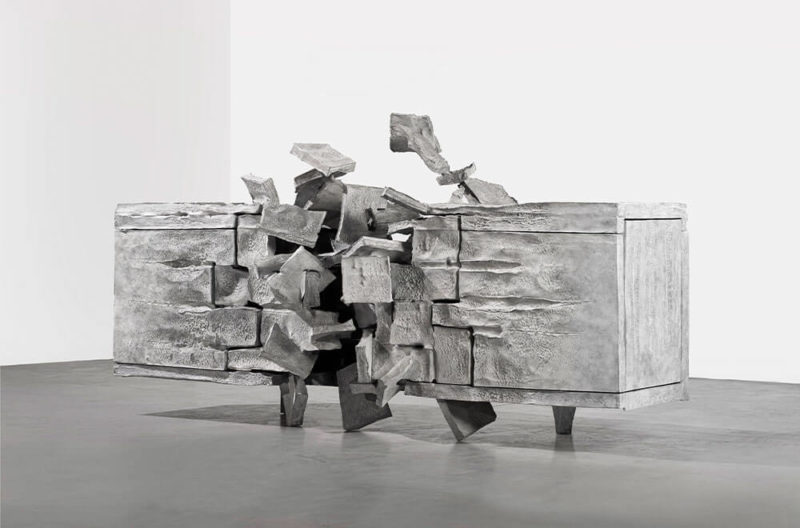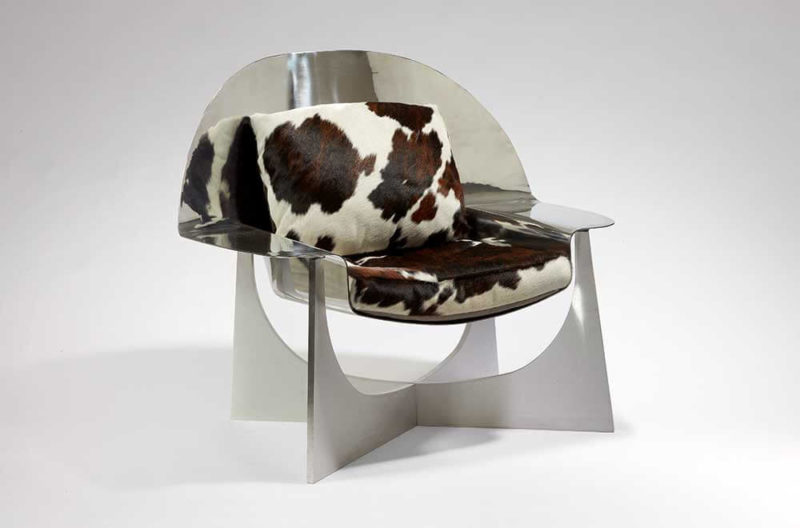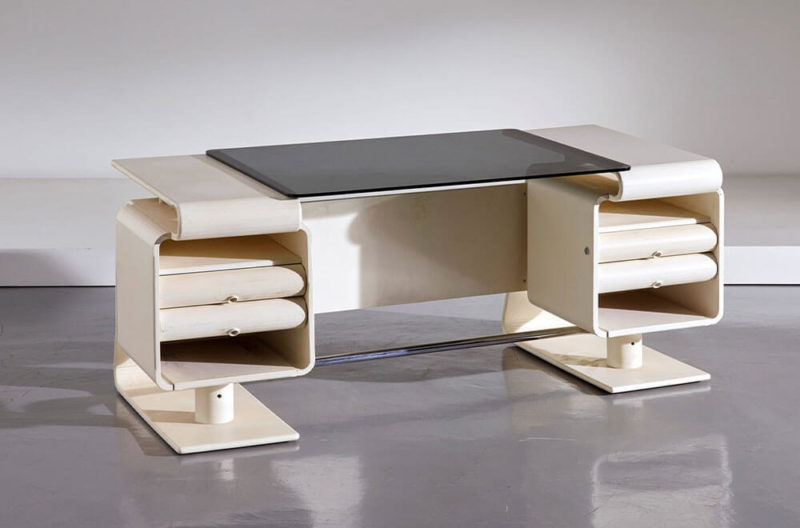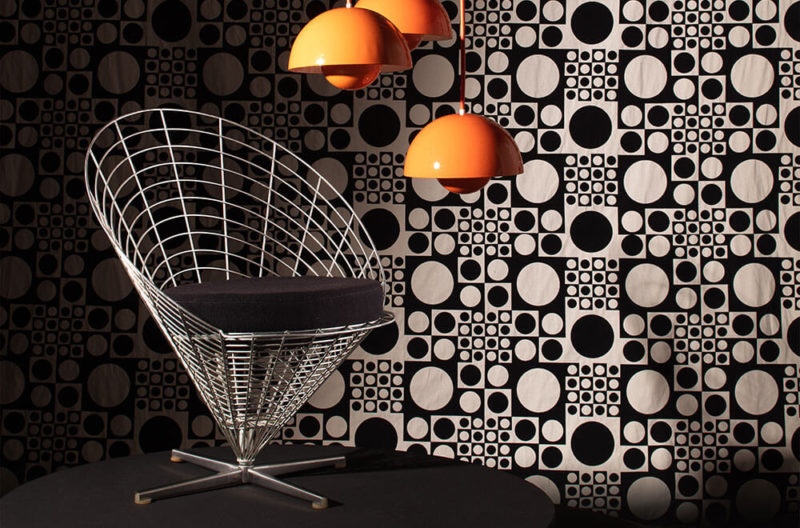‘Tree’ cabinet, circa 1960
Philolaos
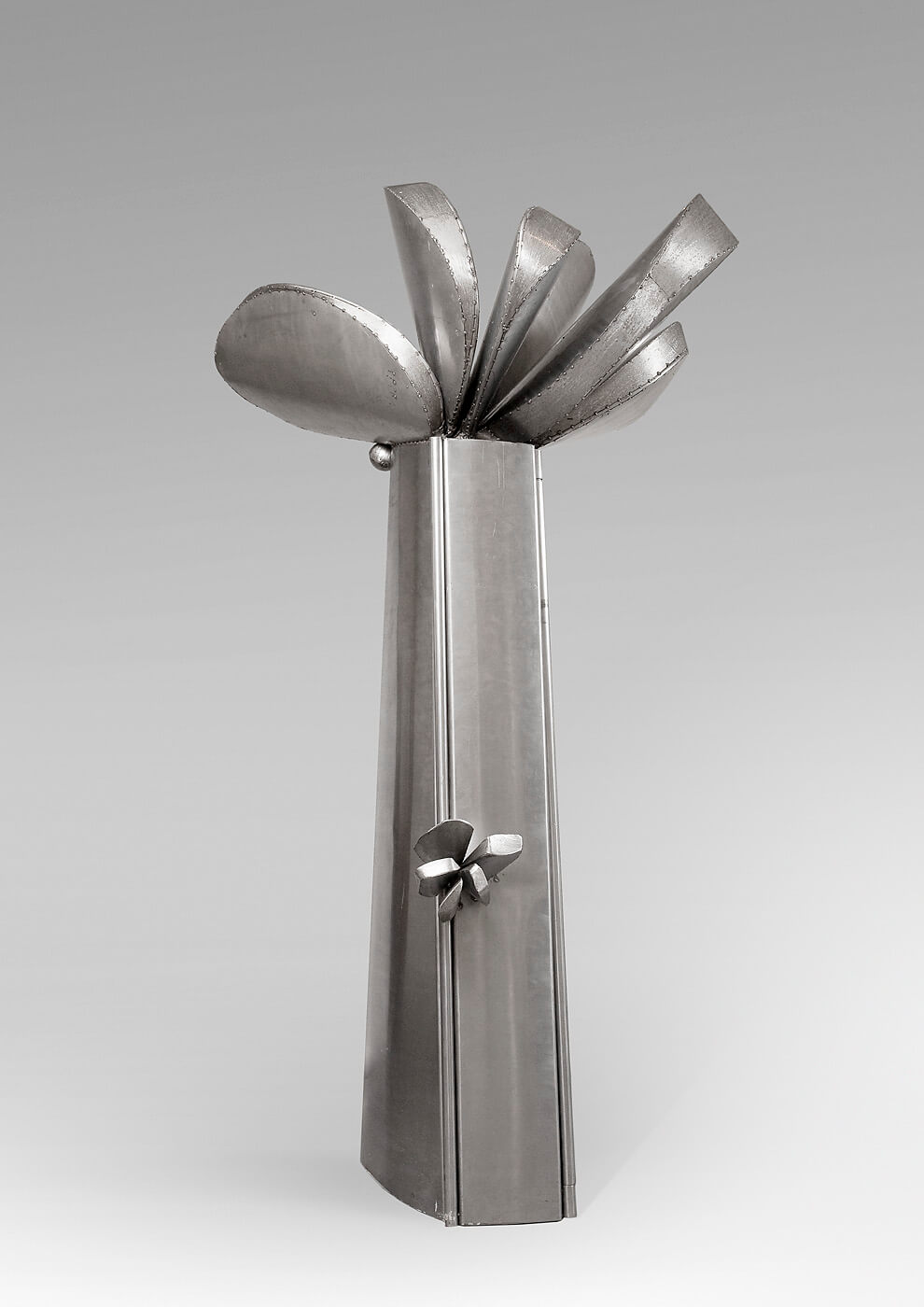
Philolaos, ‘Tree’ cabinet, circa 1960
COURTESY: Galerie Jacques Lacoste
LONG BEFORE THE concept of ‘collectible design’ or ‘functional sculpture’ emerged, the Greek artist Philolaos was making ‘liveable sculpture’ for every room in his house. An exhibition at the Château du Val Fleury in Saint-Rémy-lès-Chevreuse, southwest of Paris, showcases the pieces of furniture and objects that he made untiringly to fulfil his everyday needs.
Titled ‘Des sculptures à vivre’ (Sculptures for Living), the show brings together creations ranging from his bed to a fireplace, TV cabinet, doors and kitchen items. Through this A-Z approach fusing the sculptural and utilitarian, Philolaos transformed his habitat into an environment where each element, down to the smallest detail, bore his signature. Indeed, Philolaos said that his house and studio were like a self-portrait.
Born in 1923 in Greece as Philolaos Tloupas, Philolaos (as he became known) was the son of a carpenter. After studying art in Athens, he moved to Paris to enrol at the École Nationale Supérieure des Beaux-Arts where he started creating in metal. The discovery of metal’s tendency to twist when he worked with it enabled him to develop his stylised artistic language. However, after a collector remarking in the 1960 Salon de Mai exhibition that he could not acquire Philolaos’ sculpture and display it in a garden because the metal would turn rusty, Philolaos began experimenting with stainless steel. It would become his material of predilection.
In 1958, Philolaos built his atelier in Saint-Rémy-lès-Chevreuse, based on his own plans, where he envisioned the monumental sculptures and fountains that he made for France and Greece. For instance, he was commissioned to make an abstract steel sculpture ‘L’oiseau mécanique’, like a deconstructed bird in flight, for the Parisian business district of La Défense where it remains installed today. During his career, he also collaborated with the French interior designer Jacques Fillacier and architect André Gomis on various projects. Philolaos died in France in 2010.
Coinciding with the current exhibition, Galerie Jacques Lacoste on the Rue de Seine in Paris is presenting a unique sculpture by Philolaos in its showroom. Described as a ‘tree-shaped cabinet’ in stainless steel, its form is reminiscent of a palm tree. From its oval base, the trunk tapers as it rises and is topped with several voluminous fronds. A flower-shaped handle halfway down the trunk can be used to open the cabinet and reveal the shelves.
At once exuberant and elegant, this personality-infused cabinet transports the imagination to the Mediterranean. It was made in 1960, following the career-defining conversation with the collector that prompted Philolaos to consider how stainless steel, as opposed to metal, would remain unscathed by the elements. Beyond bearing testament to the material’s longevity, the cabinet is a beautiful example of how liveable sculpture can be idiosyncratic and highly personalised.




